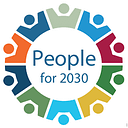United for Gender Parity: UNDP and UN Women jointly develop the UN System-wide Dashboard on Gender Parity
UN Secretary-General António Guterres launched the System-wide Strategy on Gender Parity in mid-September 2017. It includes a series of actions to reach gender parity by creating an enabling environment across the UN system and achieving ambitious targets. It addresses monitoring and data collection by recommending that entities use platforms such as an HR Dashboard to make data immediately available in real-time to managers and staff and facilitate analysis.
About the UN System-wide Gender Parity Dashboard
Central to the achievement of those targets is the collection and monitoring of data in real time. Following the launch of the system-wide strategy, UN Women and UNDP therefore decided to jointly fund and develop a UN System-wide Dashboard on Gender Parity. The dashboard is the first of its kind in UN history to consolidate, monitor, and track gender parity progress system-wide in a timely manner, using the latest available data with participation from nearly 40 UN entities. It presents the latest available data on gender balance by entity grade, duty station and staff category. It also shows a Gender Parity Index which is the number of women and men needed to reach parity.
Together, UNDP and UN Women launched the dashboard on Tuesday, October 26, 2021. The launch event (see below) included guest speakers and leaders who shared the importance of data in monitoring and measuring progress in reaching gender parity, why gender parity efforts at the UN are essential to the entire system and beyond, and exchanged views on how all stakeholders, UN leaders and civil society partners can work together in this shared mission.
UNDP is proud of its partnership with UN Women which, as of 2020, extends across the globe in over 101 country offices. The main areas of collaboration are legal and policy reforms to advance gender equality, women’s political participation, and economic empowerment. The UN-System Gender Parity Dashboard represents a ‘ONE UN’ initiative in action, having been jointly developed, designed, and launched by UN Women and UNDP, wherein UNDP provided technical support.
“The collaboration with UNDP has been crucial in the development of the UN System-wide Dashboard on Gender Parity. I am hopeful that this first ever system-wide dashboard will serve as a useful tool for all of our colleagues across the United Nations system and will help improve the effectiveness and credibility of our organization as a whole.”
As such, the dashboard provides a significant ‘source of truth’ for the UN system and presents the most updated data on parity made available and accessible on a 4-month basis — very close to ‘real time’, for the first time in the UN history.
“The UN Gender Parity dashboard enables all relevant stakeholders to follow the progress of UN agencies and acknowledges those who are making significant gains. UNDP is recognized as one of the most transparent UN entities and thus, has a lot of expertise in real-time data monitoring. We are therefore grateful for the Secretary-General’s recognition of our expertise and trust in developing this UN-wide tool.”
Beneficiaries and Partners
The dashboard has been designed keeping in mind multiple beneficiaries to ensure that gender parity is a critical consideration in all decision-making and further enhances gender parity efforts at the UN:
- Participating organizations and entities can monitor progress and benchmark the state of gender parity against other organizations, presenting collaboration opportunities when similar issues are identified.
- Hiring managers can access up-to-date staff data to better understand how hiring decisions impact progress towards gender parity.
- Senior UN leaders, Member States, civil society organizations, and UN personnel have a go-to source for system-wide gender parity information, presented in a user-friendly and engaging manner.
- Due to it being publicly accessible, the population that the UN serves can access gender parity data, improving transparency and accountability.
UNDP has been and remains a strong supporter of gender equality and gender parity. ‘Foster and Leverage Diversity’ is a focus area of UNDP’s People Strategy, People for 2030. This focus area, along with our Gender Parity Strategy 2018–2021 have made gender equality central to our work and we have seen remarkable progress in the past three years with UNDP being awarded the EDGE MOVE certificate in 2021 — one of the leading independent Gender Equality certification programs in the world. Gender equality and empowerment remains a top priority and one of UNDP’s six signature solutions — in the organization’s new Strategic Plan (2022–2025).
With the commitment to be a gender balanced and inclusive organization whereby all its people — women, men and personnel with other gender identities — have equal opportunities to grow, progress in their careers, and make a difference, UNDP maintained full gender parity among staff e — 50% men and women (as of December 2021). Among the broader workforce — which also includes service contractors and Un Volunteers (UNVs)– the share of women and men remains close to parity (46% women and 54% men). One of the most notable achievements in the last few years is that gender parity targets have been met among senior management — members of the Executive Group (EG), Resident Representatives (RRs) and Deputy Resident Representatives (DRRs). Also, the implementation of a number of practical initiatives as part of People for 2030 helped create a more positive workplace experience. The 2020 Global Staff Survey (GSS) results show that, while women continue to score slightly lower than men across all metrics, the gender gap in employee experience shrank for the first time.
We take this opportunity to also link you to the Field-specific Enabling Environment Guidelines which encourage our workforce to champion workforce diversity, leverage different perspectives and build a flexible organization with family-friendly policies. An intersectional approach allows for a comprehensive examination of the complexities of human identity and an understanding of the network of informal hierarchies and power dynamics that work together to create these issues.
